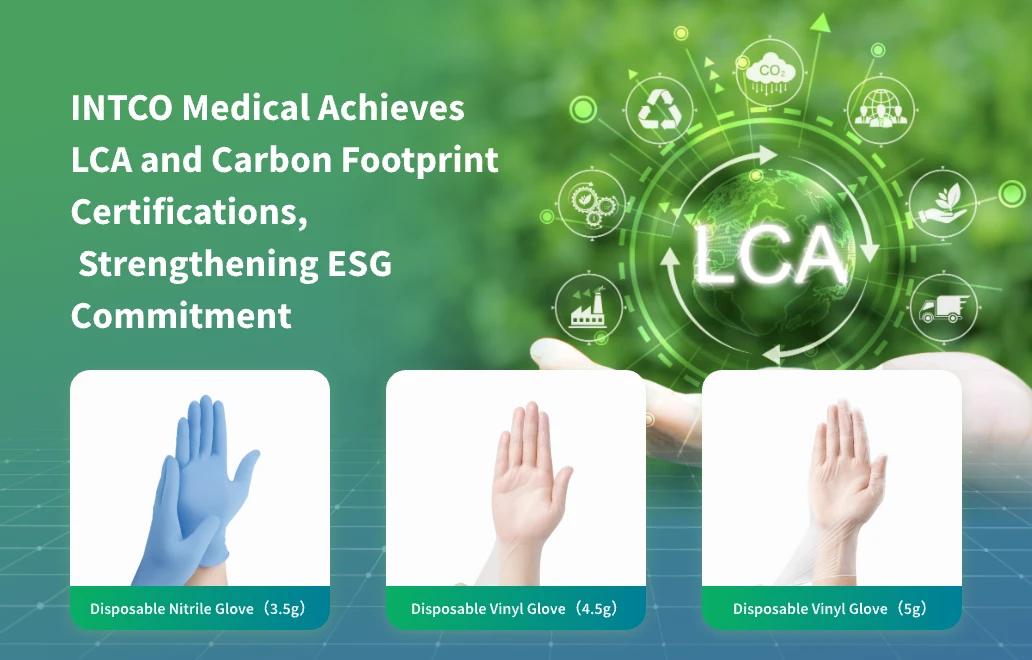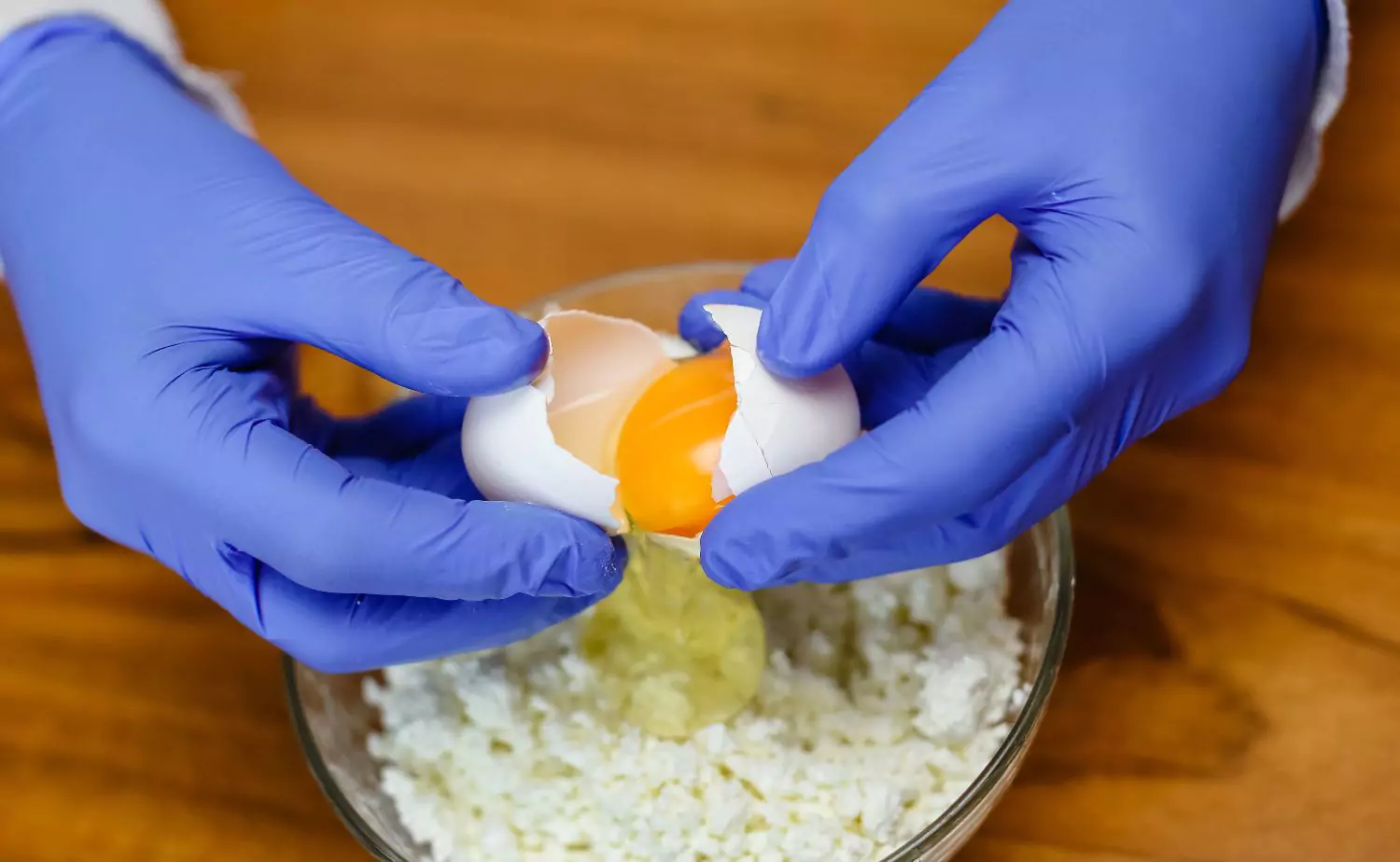Glove products
Nitrile vs Latex vs Vinyl: Types of Disposable Gloves Compared [2025 Guide]
When choosing the right types of disposable gloves for your needs, the differences between nitrile, latex, and vinyl can significantly impact protection and comfort. Between 1-6% of the general American population suffers from latex allergies according to the CDC, making alternative options increasingly important. Disposable gloves have become essential items in healthcare environments, but their applications now extend far beyond medical settings.
We’ve seen nitrile gloves gain tremendous popularity in recent years, with the market projected to surpass $11.2 billion by 2027. This growth isn’t surprising considering nitrile’s exceptional puncture and chemical resistance, making these gloves ideal for both medical and industrial use. While latex gloves were once the recommended protection against bloodborne pathogens in the 1980s and 1990s, the rise in allergic reactions has pushed many to seek alternatives.
In this comprehensive guide, we’ll compare nitrile vs latex gloves, explore latex-free options like nitrile, and examine the different types of disposable gloves available today. As we analyse the strengths and limitations of each material, we’ll highlight why companies like INTCO Medical, the largest latex-free disposable gloves manufacturer, have become so vital to various industries. Whether you’re looking for food service gloves or medical-grade protection, understanding these differences will help you make the best choice for your specific needs.
Material Composition and Glove Types Explained
Understanding the material composition of different types of disposable gloves helps in making informed decisions about which option suits your specific needs.
Nitrile Gloves: Made from synthetic rubber (NBR)
Nitrile gloves are manufactured from nitrile butadiene rubber (NBR), a synthetic polymer created by combining acrylonitrile and butadiene through copolymerization. Unlike natural rubber, this petroleum-based compound offers exceptional resistance to oils, fuels, acids, and other chemicals. The acrylonitrile component provides chemical resistance, whereas butadiene contributes flexibility and elasticity. Furthermore, nitrile gloves undergo several manufacturing stages, including polymerisation, curing, forming, and finishing, to ensure durability and protection. As a synthetic alternative, nitrile has become increasingly popular for both medical and industrial applications due to its puncture resistance and hypoallergenic properties.

Latex Gloves: Derived from natural rubber sap
Latex gloves are produced from natural rubber latex, a milky fluid harvested from the Hevea brasiliensis (rubber tree). Initially collected through “tapping” – a process where skilled workers extract sap by making controlled cuts into the tree bark – the raw material undergoes centrifuging to remove impurities. Subsequently, the concentrated latex solution is subjected to vulcanisation, a chemical treatment involving sulphur and curing agents that enhances elasticity and durability. Despite their excellent tactile sensitivity and comfort, latex gloves pose significant allergy risks, with prevalence rates of 9.7% among healthcare workers and 4.3% in the general population.
Vinyl Gloves: Composed of PVC and plasticisers
Vinyl gloves consist primarily of polyvinyl chloride (PVC) mixed with plasticisers that enhance flexibility. These plasticisers typically make up over 30% of the glove’s weight and remain unbound to the vinyl polymer. Consequently, vinyl gloves are more affordable than nitrile or latex alternatives, making them suitable for low-risk, short-duration tasks. Nevertheless, they offer less durability and chemical resistance compared to other options.
Do nitrile gloves have latex? Clarifying misconceptions
No, nitrile gloves do not contain latex. Although sometimes referred to as “nitrile latex” in manufacturing contexts, this terminology merely describes the suspension of NBR particles in water during the production process. INTCO Medical, the largest latex-free disposable gloves manufacturer, produces nitrile gloves that are 100% latex-free, making them ideal alternatives for individuals with latex allergies.
Performance and Protection Levels
The performance characteristics of disposable gloves vary greatly based on their material composition, directly impacting their suitability for specific tasks.
Puncture Resistance: Nitrile vs Latex vs Vinyl
Nitrile gloves demonstrate superior puncture resistance, offering 3-5 times more durability compared to latex alternatives. This makes them ideal for environments where exposure to sharp objects is common. Notably, nitrile also reveals punctures more visibly, an essential safety feature in medical settings. Latex gloves provide moderate puncture resistance but may not reveal tiny holes as easily. Vinyl gloves rank lowest in this category, as they are particularly prone to tearing and therefore unsuitable for high-risk environments.

Chemical Resistance: Nitrile’s edge in industrial use
Nitrile excels in chemical resistance, particularly against oils, greases, acids, caustics, and alcohols. In a comparison of 71 chemicals, nitrile received excellence ratings for 44 substances versus latex’s 24. Additionally, nitrile remains resistant to petroleum-based products, making it the preferred choice for automotive and industrial applications. Conversely, latex breaks down when exposed to oils, while vinyl offers limited protection against chemical exposure.
Tactile Sensitivity: Latex leads in precision tasks
Latex gloves provide superior tactile sensitivity thanks to their thin texture and elasticity. This “second-skin comfort level” makes them ideal for precision tasks requiring fine motor skills. Though previously less sensitive, modern nitrile gloves have improved significantly, offering good tactile feedback as they conform to hand warmth. Vinyl consistently ranks lowest in sensitivity, making it suitable only for general use.
Durability in Long-Term Use: Which lasts longer?
Nitrile gloves maintain their integrity even during prolonged wear, featuring excellent abrasion resistance and flexibility. Latex demonstrates moderate durability but can weaken with extended use. Vinyl gloves deteriorate quickly, especially in longer applications, making them appropriate only for short-duration tasks.
Grip and Fit: How each glove adapts to hand shape
Latex provides exceptional elasticity and a form-fitting experience. Nitrile offers a snug fit that moulds to hand shape over time, with textured fingertips enhancing grip. Additionally, nitrile’s lower friction resistance makes them easier to don and remove. Vinyl gloves feature a looser fit with lower elasticity, resulting in less precise handling capabilities.
INTCO Medical, the largest latex-free disposable gloves manufacturer, specialises in nitrile gloves that combine optimal protection with comfort for various applications.
Allergies, Environment, and Cost Considerations
Health and safety considerations often determine the final choice when selecting appropriate disposable gloves for specific applications.
Latex Allergies: Why nitrile and vinyl are preferred
Allergic reactions to latex remain a significant concern among healthcare workers and the general population. According to the Asthma and Allergy Foundation of America, approximately 4.3% of the general population experiences latex allergies. These reactions range from mild skin irritation and redness to severe anaphylaxis. For healthcare workers, the prevalence is even higher, reaching 9.7% due to frequent exposure. Accordingly, nitrile and vinyl gloves have become essential alternatives since both materials are completely latex-free. Nitrile gloves provide excellent protection with hypoallergenic properties, making them suitable for individuals with sensitive skin. Vinyl gloves, albeit less durable, offer another safe option for those with latex sensitivities.
Biodegradability: Latex vs synthetic alternatives
Since environmental impact has become increasingly important, the biodegradability of different types of disposable gloves merits consideration. Natural latex gloves hold a distinct advantage in this area, as they break down more easily when disposed of. In contrast, both nitrile and vinyl gloves present environmental challenges. Nitrile gloves, although durable, contribute to plastic waste and can persist in the environment for hundreds of years. Meanwhile, vinyl gloves contain PVC, which can release harmful chemicals during production and disposal. Some manufacturers are responding to these concerns by developing more eco-friendly nitrile options that decompose faster than traditional versions.
Cost Comparison: Vinyl as the budget-friendly option
The cost of disposable gloves varies considerably based on material type and intended use. Vinyl gloves generally range from USD 0.02 to USD 0.10 per glove, establishing them as the most economical choice. Nitrile gloves, with their superior durability and chemical resistance, typically cost more but offer better long-term value for high-risk environments. Latex gloves, traditionally positioned as the premium option due to their exceptional elasticity, often have fluctuating prices influenced by rubber farming conditions in Southeast Asia. Although vinyl gloves provide immediate savings, their lesser durability might necessitate more frequent replacements, potentially affecting overall expenses.
INTCO Medical: The largest latex-free gloves manufacturer
INTCO Medical stands as the world’s largest latex-free disposable gloves manufacturer, specialising in nitrile and PVC gloves. The company operates seven production facilities across China and Vietnam, with an annual capacity of 56 billion nitrile gloves and 31 billion PVC gloves. Rather than focusing solely on production volume, INTCO Medical has invested ¥398 million in research and development to create innovative solutions. Their product line includes biodegradable nitrile gloves and syntex™ synthetic latex gloves specifically designed for users with latex allergies. Furthermore, INTCO Medical has received dual LCA & Carbon Footprint certifications for their nitrile and PVC gloves, marking an industry first in China.
Comparison Table
|
Characteristic |
Nitrile Gloves |
Latex Gloves |
Vinyl Gloves |
|
Material Composition |
Synthetic nitrile butadiene rubber (NBR) |
Natural rubber latex from Hevea brasiliensis trees |
PVC with plasticisers (>30% weight) |
|
Puncture Resistance |
3-5 times more durable than latex; shows punctures visibly |
Moderate resistance; may not reveal tiny holes easily |
Lowest resistance; prone to tearing |
|
Chemical Resistance |
Excellent (rated excellent for 44 of 71 chemicals tested); resistant to oils and petroleum-based products |
Moderate (rated excellent for 24 of 71 chemicals); breaks down with oil exposure |
Limited protection against chemicals |
|
Tactile Sensitivity |
Good, improves with hand warmth |
Superior (“second-skin” comfort) |
Lowest sensitivity |
|
Durability |
Maintains integrity during prolonged wear |
Moderate, weakens with extended use |
Quick deterioration, suitable for short-duration only |
|
Grip and Fit |
Snug fit, moulds to hand shape, textured fingertips |
Exceptional elasticity, form-fitting |
Loose fit, lower elasticity |
|
Allergy Risk |
Hypoallergenic |
High (affects 4.3-9.7% of population) |
Low allergy risk |
|
Cost |
Higher cost, better long-term value |
Variable pricing (affected by rubber farming) |
Most economical (USD 0.02-0.10 per glove) |
|
Primary Applications |
Medical, industrial, chemical handling, food processing |
Precision medical procedures (when allergies are not a concern) |
Light-duty tasks, brief food handling, basic cleaning |
|
Environmental Impact |
Slow to biodegrade, contributes to plastic waste |
More biodegradable than synthetic options |
Contains PVC, releases harmful chemicals during disposal |
Conclusion
Choosing the right disposable gloves ultimately depends on your specific needs, environment, and health considerations. Throughout this comparison, nitrile gloves have emerged as the superior option for high-risk environments due to their exceptional puncture resistance, chemical protection, and hypoallergenic properties. These gloves provide 3-5 times more durability than latex alternatives while offering protection against a wide range of chemicals, making them particularly valuable in healthcare, industrial settings, and food processing.
Latex gloves, despite their allergy concerns, still excel in scenarios requiring maximum tactile sensitivity and precision. Their “second-skin” comfort makes them irreplaceable for certain medical procedures where fine motor skills are essential. Nevertheless, the rising prevalence of latex allergies has significantly reduced their widespread use, especially in healthcare environments.
Vinyl gloves, though less durable and protective, serve as cost-effective solutions for light-duty tasks with minimal risk exposure. Their affordability makes them practical for situations requiring frequent glove changes, such as basic food handling or light cleaning. However, their environmental impact and limited protection against chemicals remain significant drawbacks.
INTCO Medical, the largest latex-free disposable gloves manufacturer, has pioneered solutions for those seeking alternatives to latex. With their extensive production capacity and commitment to research and development, they have addressed both the rising demand for nitrile gloves and the growing environmental concerns through innovations like biodegradable options.
Undoubtedly, the choice between nitrile, latex, and vinyl depends on balancing protection requirements, comfort needs, budget constraints, and sustainability concerns. While nitrile gloves dominate in high-risk environments, each material has its place in the diverse landscape of personal protective equipment. Therefore, understanding these differences allows you to make informed decisions that prioritise both safety and practicality in your specific context.


























